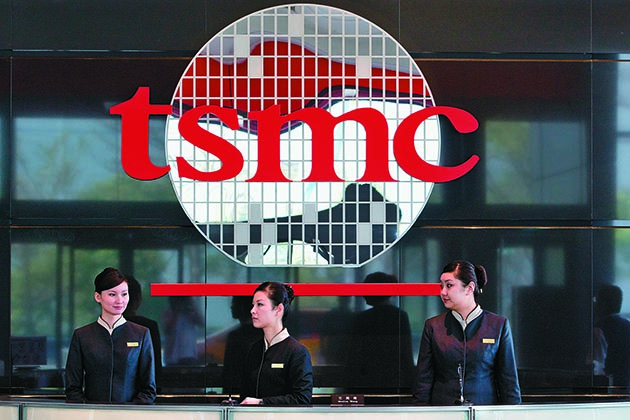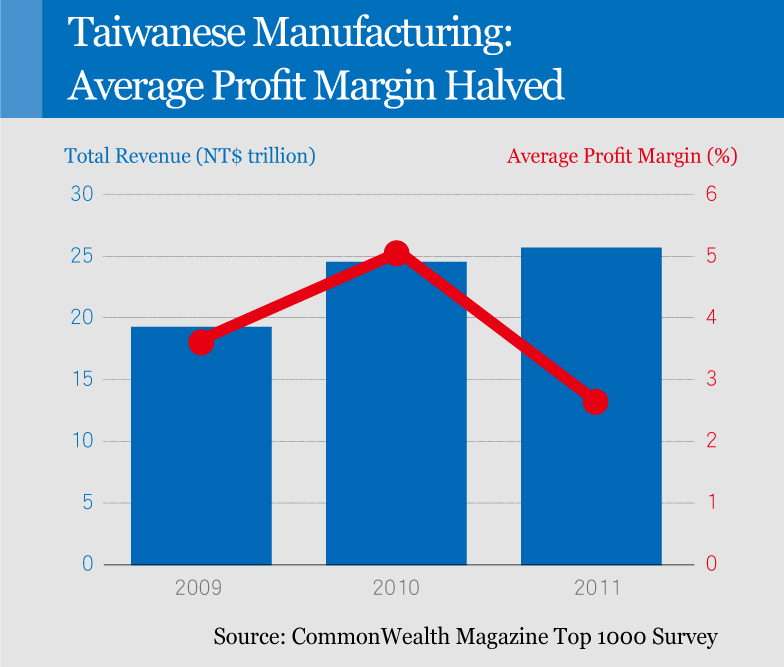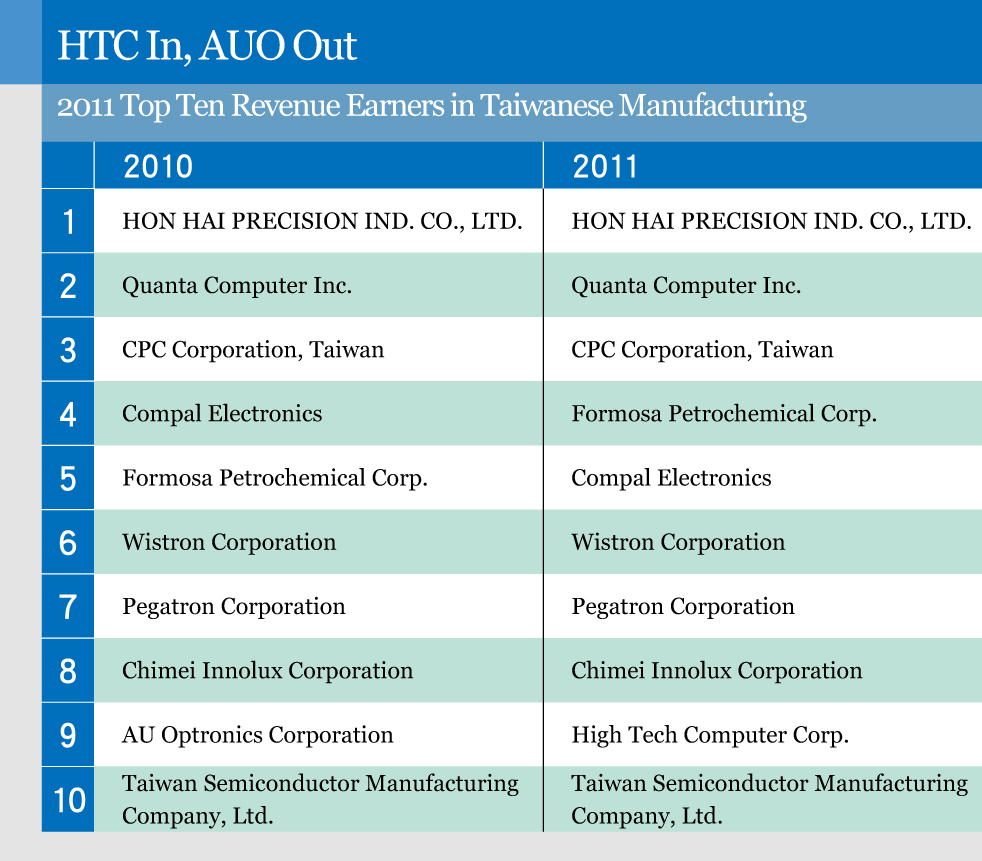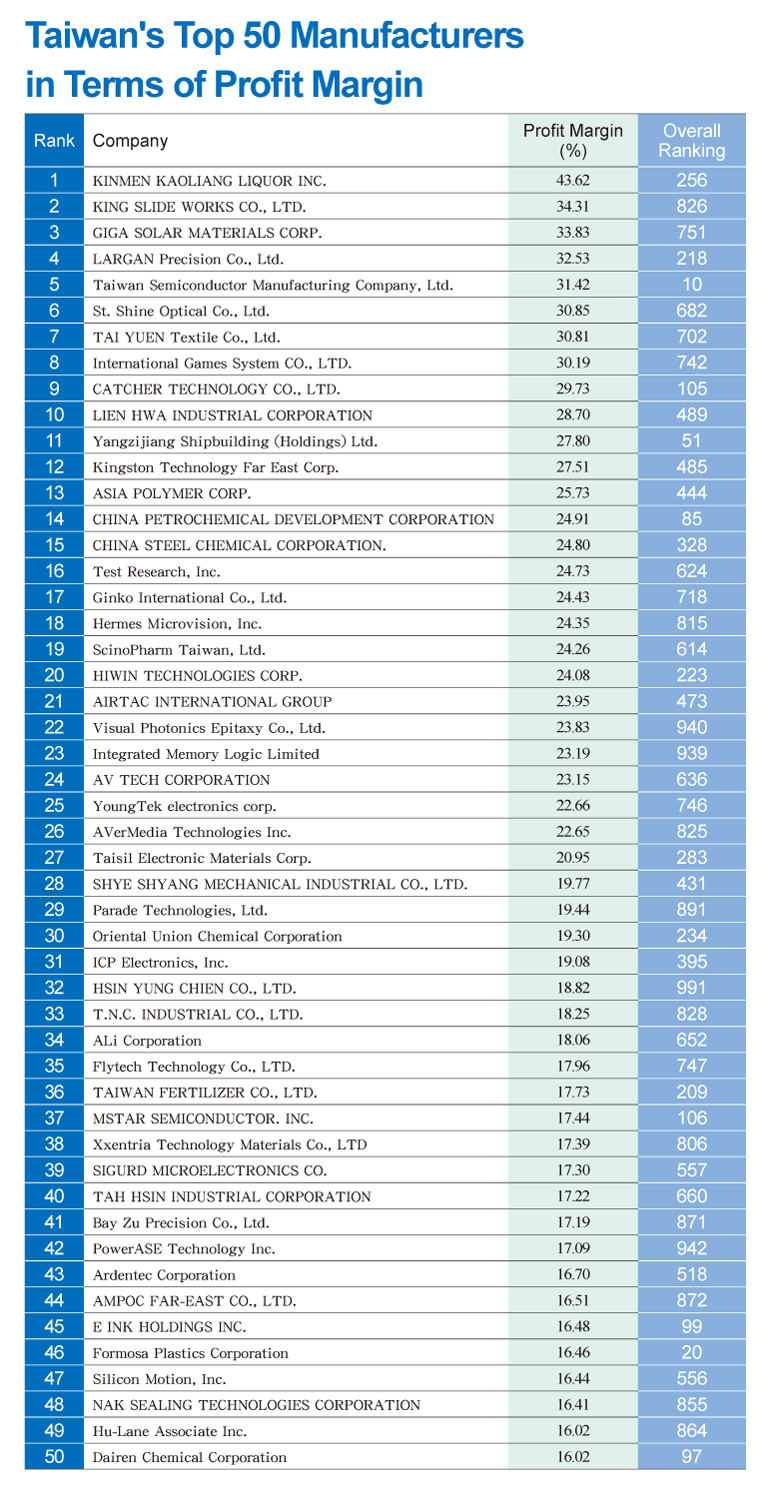Top 1000 Manufacturing Enterprises
Focus amid Volatility

Source:Chieh-Ying Chiu
Growth in Taiwan's manufacturing industry has slowed, but some companies still boast revenues worth one fifth of GDP. With the law of the jungle ruling the market, how do they manage to join the ranks of the fittest?
Views
Focus amid Volatility
By Elaine HuangFrom CommonWealth Magazine (vol. 496 )
The manufacturing industry has lived through a year that began upbeat and ended downbeat, as natural disasters and debt crises darkened business prospects.
Manufacturers posted great results in the first half of the year only to see them wiped out as the economy soured in the second half of 2011. The once-in-a-century earthquake and ensuing tsunami in Japan, flooding in Thailand, the European sovereign debt crisis, a tepid US economy, and China's aggressive tightening policies all served to undermine economic growth momentum and consumer confidence in major markets. Such unprecedented volatility in the overall environment swallowed up the results built up during the first half of the year.
While the Taiwanese manufacturing sector's total revenue posted double-digit growth in 2010, it plummeted to 3.8 percent in 2011. Not counting 2009, when the global economy languished in the wake of the financial industry meltdown, the figures for 2011 represent the lowest level in five years. The average profit margin declined by one half, posting a three-year low. (Table 1)
"Basically, the entire economic environment is not good, growth is shrinking, consumer demand is contracting, and corporate spending is declining too," offers Kevin Chang, vice president in charge of research at Fubon Securities Investment Services Co. "If you want to maintain growth amid such an adverse environment, you need to pick the right products and companies," he adds.
Jumping on the bandwagon of popular trends is the least risky way of maintaining profitability amid an economic downturn.
The changes in the Top Ten of Taiwan's 1,000 largest manufacturing enterprises provide the full picture at a glance.
The revenue of top-ranked Hon Hai last year exceeded NT$3 trillion, about one fifth (or 21.4 percent) of the island's GDP. Hon Hai's 2011 revenue amounts to the combined revenue of five other electronics contract manufacturers – Quanta Computer, Compal Electronics, Wistron Corporation, Pegatron, and Inventec Corporation.
Hon Hai not only takes the crown for largest revenues, but also boasts impressive profitability. In 2011, it ranked second only to Taiwan Semiconductor Manufacturing Company (TSMC) in terms of net profits.
Since Hon Hai is a key supplier for Apple Inc. with its iPhone, iPad and other hot-selling products, Hon Hai's revenue and profits remained largely unaffected by the economic winter.
The Top 3 in Terms of Net Profit
The top three in terms of net income after tax were TSMC, Hon Hai, and smartphone maker HTC.
Given the sluggish semiconductor market last year, TSMC chairman Morris Chang warned, "Right now we can't see the swallows of spring."
Nonetheless, TSMC consolidated its lead in core technology and bolstered its customer ties, keeping burgeoning rival Samsung Semiconductor at bay. Although the overall environment is not good and profit figures declined from the previous year, TSMC still defended its position as the top money-maker in terms of net profits.
The third biggest earner of net profits, HTC, also managed to gain a position among the Top Ten revenue earners for the first time. (Table 2)
HTC accomplished this feast despite ever fiercer competition from rival Samsung, which strongly pushes its own smartphone operating system Galaxy and is also at an advantage with regard to distributors and product range. Thanks to high profit margins for its high-end smartphones, HTC posted net profits worth NT$61.98 billion, becoming the third largest company by net profit.
Display Giant AOU Drops out of Top Ten
The dramatic changes in the world economy have left some industries in desperate circumstances. Most obvious are the predicaments of display makers and the photovoltaic industry, which were both plagued by chronic overcapacities.
The prices for large-scale displays kept falling as demand for LCD television sets in Europe and the United States contracted and global sales declined.
AOU, the second largest display maker in Taiwan, had to face the double whammy of overcapacity, plummeting prices and antitrust litigation in the United States. As a result AOU slipped from the Top Ten of revenue earners to rank 15.
Motech Industries Inc., once Taiwan's highest priced solar energy stock and ranked 90 in terms of revenue, did not even make it among the Top 100 this year. The company's dismal performance can be attributed to sharp cuts in solar energy subsidies in Germany and declining demand for solar energy devices in general.
Kinmen Liquor Scores Highest Profit Margin
In terms of net profit margins, the Kinmen Liquor Factory Industry Co., producer of Taiwan's popular Kaoliang liquor, reigns supreme in Taiwan. While the distillery's revenue is not even high enough to make it into the Top 200, its net profit margin stands at an unrivalled 43 percent, leaving in the dust behemoths like Hon Hai, which posted a net profit margin of just 2.3 percent.
In terms of average net profit margin, the high-tech industry showed little luster last year. The three industries with the highest net profit margins were all conventional sectors: food and beverages, precision machinery, and biopharmaceuticals.
High-tech and conventional sector prospects have continued to diverge this year.
The high-tech industry, which saw a steep decline in 2011, can expect a recovery in the latter half of this year.
The last week of April was crowded with institutional investor briefings which hinted at rebounding demand. TSMC chairman Chang told the audience that his company will increase capital spending in response to a changing global market.
TSMC CFO Lora Ho pointed out that the foundry is pulling out all the stops to boost output to satisfy rising demand. Growth is mainly driven by mobile devices.
Apple, Samsung, HTC and other smartphone manufacturers face fierce competition in the future. On top of that, there is massive demand for budget and medium-priced smartphones in emerging markets. In China, for instance, local brand makers such as Huawei Technologies, Lenovo, Xiaomi Tech Company have been quick at developing stripped-down smartphones known as feature phones, and the line between smartphones and feature phones is getting blurrier.
The smartphone craze will boost the number of people using mobile devices to access the Internet.
Sophia Cheng, vice president at the Taiwan Branch of Merrill Lynch, Pierce, Fenner & Smith Inc., notes that the shift toward mobile computing systems and applications is also boosting ultra-thin devices with touch screens that run on the Windows 8 operating system expected to launch this autumn.
Notebook makers including HP, Dell, Lenovo, Acer and Asus are scrambling to release such ultrabooks in the latter half of this year. These light, ultra-thin notebooks are expected to transform the PC industry and trigger a new wave of growth.
While the outlook is rosy for the high-tech industry, the conventional industries still await growth momentum from a new source other than the China market.
Last year there was no major demand worldwide that could have sustained growth. At the same time China's golden decade of infrastructure investment is entering a stage of maturity.
In the past China consumed nearly 45 percent of world steel output. The steel industry, accustomed to growth rates near 20 percent, will likely see only single-digit growth in the future. Researchers forecast that per capita steel consumption will reach around 500 kg as the Chinese economy matures. But today China's steel consumption already stands at 450 kg, nearing the forecast peak.
"The pillar of growth that China once was has disappeared. Also since prospects for 2012 are very uncertain, we can only assume that the brisk season won't be brisk. The conventional industries should grow in the first quarter, but we haven't seen any momentum, which means that demand is very low," laments Chien-jen Chen, a project manager at the Metal Industries Research and Development Centre.
Unless infrastructure development in India picks up, there is not much reason for optimism. "When China's golden decade is over, growth won't be sustainable," warns Chen.
In early April, the four core members of the Formosa Plastics Group – Formosa Plastics Corporation, Nan Ya Plastics Corporation, Formosa Chemicals & Fiber Corporation, and Formosa Petrochemical Corporation – announced first quarter results for 2012, swinging back into profitability after incurring losses last year. However, Formosa Plastics Group CEO William Wong was quick to pour cold water on comments from the audience which expressed confidence that the economy was back on the road to recovery. Pointing to the lack of predictability, Wong said, "It's too early to talk about economic trends in the second half of the year now."
Following a lackluster 2011, uncertainties still abound this year. The manufacturing industry still needs to make great efforts to seize the opportunity when the first glimmers of hope start to emerge.
Translated from the Chinese by Susanne Ganz











